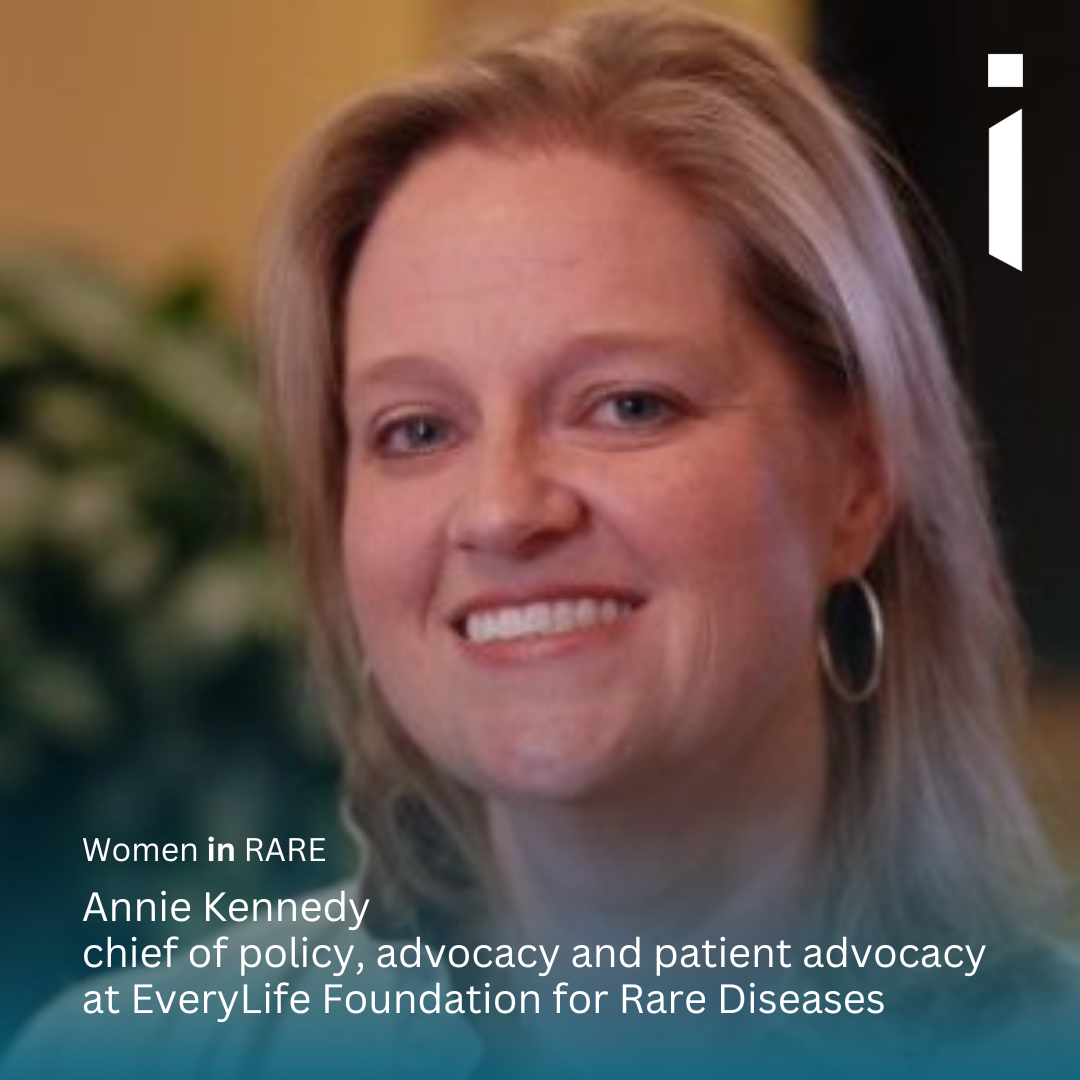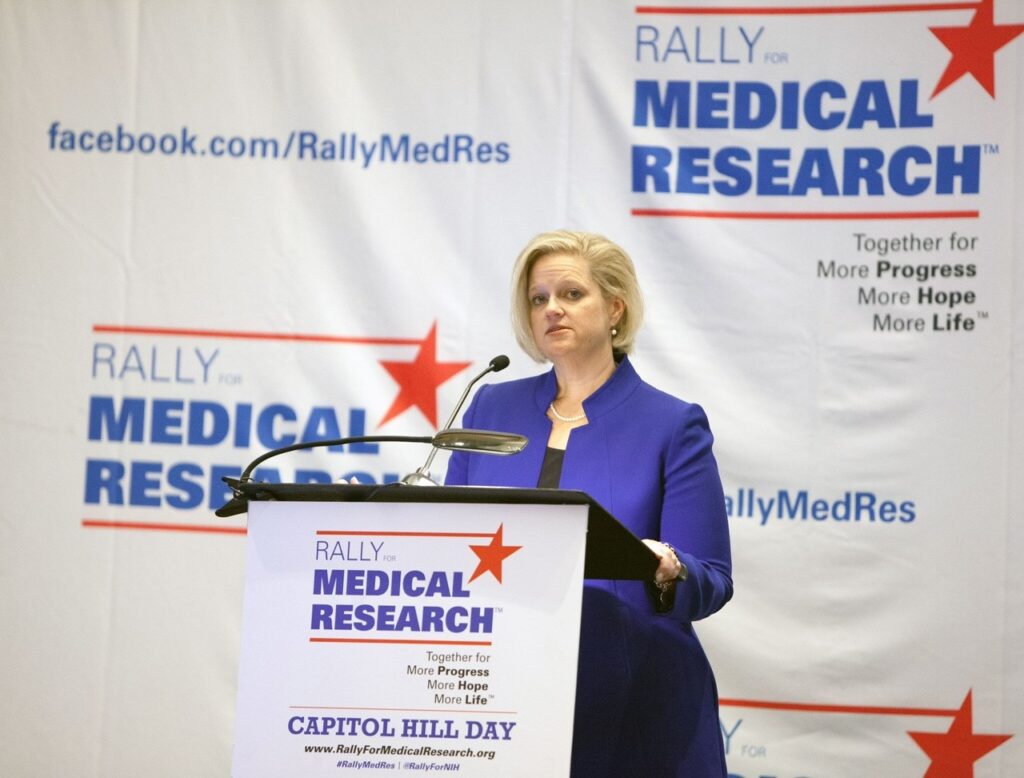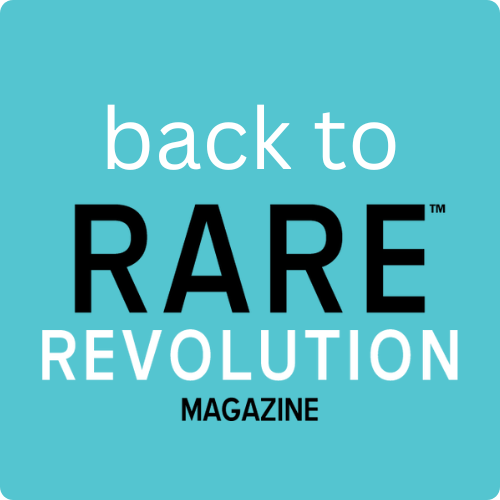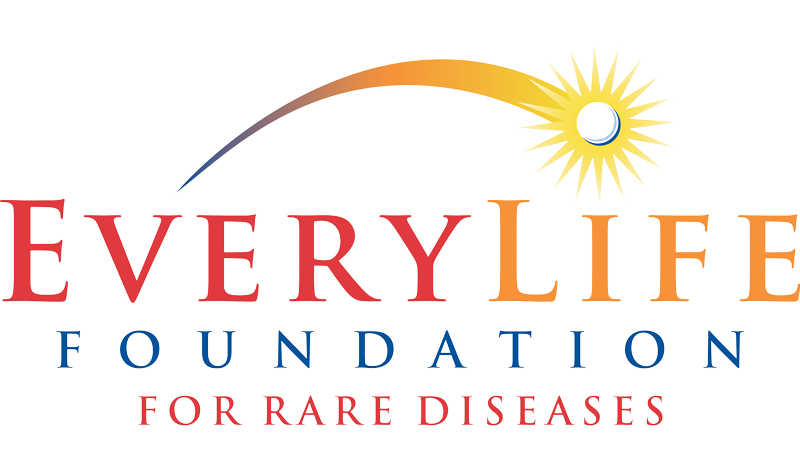Annie Kennedy of EveryLife Foundation for Rare Diseases
Estimated reading time: 8 minutes

“I believe that a career of service is about taking life personally; letting the lives that touch yours, touch you. Unlike helping and fixing and rescuing, service is mutual.”
A veteran leader in the patient focused drug development movement, Annie joined the EveryLife Foundation in 2018, where she’s led numerous community-driven evidence development efforts including the ‘National Economic Burden of Rare Disease study’, the ‘Guide to Patient Involvement in Rare Disease Therapy Development’, and ‘The Cost of Delayed Diagnosis in Rare Disease: A Health Economic Study’. Her advocacy efforts and community activation contributed to new federal infrastructure for rare disease including the Muscular Dystrophy Coordinating Committee (MDCC) and the Rare Disease Innovation Hub at the Food and Drug Administration (FDA).
Annie previously held leadership roles at Parent Project Muscular Dystrophy (PPMD) and the Muscular Dystrophy Association (MDA) where she led landmark legislative, regulatory, newborn screening, transitions and access policy efforts including the MD CARE Act (2001, 2008, 2014), and the Patient Focused Impact Assessment Act (PFIA), which became the Patient Experience Data provision of the 21st Century Cures Act. Additionally, she led the nomination of the ICD codes for Duchenne/Becker and FSHD, and engaged with ICER around the development of the modified framework for the valuation of ultra-rare diseases.
She is a sought-after advisor to patient-centered organisations and initiatives across the non-profit and government sectors, and in 2024 was named by Women We Admire as one of the Top 50 Leaders in Washington, DC.
Annie’s community roles have included service on the Board of Directors of Cure SMA, the National Duchenne Newborn Screening Steering Committee, a co-lead with IVI Engaging Patients with Rare Disease in Identifying Meaningful Approaches to CER and Value Assessment (PCORI award), the Institute for Gene Therapies (IGT) Patient Advocacy Advisory Council, the NIH Strategic Planning Working Group on Engaging the Public as Partners in Clinical Research (NexTRAC), and as a member of the NIH NCATS Advisory Council.
What motivated you into your chosen career path?
When I was little, I wanted to be a doctor when I grew up. Throughout high school, I sought experiences that prepared me for medical school. Among them was a summer volunteering in a paediatric emergency room. The other was as a volunteer at an overnight summer camp led by the Muscular Dystrophy Association (MDA).
That one-week volunteer experience in 1989, became 10 years of volunteering. And then became a career of service that began with a role that included directing that very same summer camp—for 10 years. And somewhere along the way that direct service role at MDA evolved into a role with the National Office, and then an opportunity to establish MDA’s National Advocacy Office in Washington, DC. And then eight years later an opportunity to take a deeper dive into Duchenne and join the staff of PPMD, while simultaneously joining the Board of Directors for CureSMA. And then about five years later, that evolved once again into an opportunity to apply those learnings even further to our broader rare disease community—and build out the evidence-based policy work—as I joined EveryLife and led the National Economic Burden of Rare Disease Study.
And along the way, I had a couple of people who I loved very much who were impacted by rare disease. And I had the honour of being a part of their care and their journeys.
But all the while, it has been about service. Mutual service. Working alongside our powerhouse community.
I believe that a career of service is about taking life personally; letting the lives that touch yours, touch you. Unlike helping and fixing and rescuing, service is mutual.


What do you see as some of the opportunities as a woman in your field?
I started attending research meetings and federal agency workshops in the early 90s. It would be common for those convenings to be primarily men. And certainly, the presenters were almost always men. That has shifted. Women are much more often represented across the ecosystem.
But as I am now aging into a new stage of life (along with my friends and colleagues), I am alerted to a new stage of inequity.
While it used to just be the pressure of childcare that hindered professional growth, it is now exacerbated with the complexities of aging parents. Stir in a job that includes long hours or travel, or a child with complex healthcare needs (the underpinnings of the field in which we work), and you have a trifecta of professional obstacles.
Until we begin to meaningfully solve these barriers, not only will we not reduce inequities for women in our field—but more—we will not fully unlock the optimal potential for patient community engagement in the rare disease space.
What are some of the barriers to success as a woman in your field?
As a professional woman. And a mom. And a single mom. Often, I am asked how I achieve ‘work/life balance’? My answer is simple, “I don’t”.
It’s not about balancing demands of work and personal life for me.
Those lines crossed, blurred and merged so long ago.
It is really about achieving harmony. Harmony between my son and immediate family’s needs—and my vocational priorities (what one of my dear friends recently referred to as my ‘ministry’).
But this means that I must ensure that the effort I expend serves as a ‘force multiplier’, yielding maximum outcomes for those I care about.
Whether that be time spent with my son, or efforts intended to accelerate policy outcomes or therapeutic development.
The ‘harmony’ has been possible because this work—rare disease—is personal. The families I work alongside and fight alongside are my personal life and my family. Much of the joy in my world exists because of many of our community. And is it enhanced, enriched and blessed daily by our community.
What is one piece of advice you would give your 10-year-old self?
This question is hard for me because I probably wouldn’t have trusted my advice. Because the truth is, I had to live through it all—the loves, the losses, the learnings—to be exactly where I am meant to be now.
So maybe that would be the advice. “Just keep going. Trust your instincts. Trust you’re becoming.”
Can you tell us about your current work priorities and focus or a particular project you are working on?
As you know, we are in an era of unprecedented change—and unprecedented opportunity.
Robust therapeutic pipelines bring great hope for patients with great unmet need and urgency. But also great challenges for clinical trial infrastructure and recruitment, trial design, approval pathways and reimbursement justification. Therapeutic successes yield urgent policy issues such as nationwide newborn screening, insurance reimbursement frameworks for novel therapies, federal policies that promote autonomy and independence for new generations of patients who are now living into adulthood—and much more.
The opportunities are endless. The priorities are extensive. The moment is now.
As I have watched this exciting landscape change, I have felt a crushing sense of responsibility to our community. To do more. To ensure that what we are doing is making the maximum impact possible. To ensuring that my efforts alongside our community are always a ‘force multiplier’ for positive, impactful outcomes.
I once had the opportunity to meet a beautiful man from Ghana who had committed his life to serving others through Catholic Relief Services. After spending an evening at a ballpark together and swapping stories about our mission-rich lives, as we departed he turned to me and said “I wish you more grease to your elbows”. I loved that. My grandmother used to always speak of putting more ‘elbow grease’ into your efforts; the imagery was vivid and the turn of phrase was wonderful. Yes, more grease to our elbows.
In this dynamic environment of constant change in 2025, I find myself seeking projects and partners who are similarly working to ‘lean in’, form novel partnerships and collaborations, develop high-impact, non-partisan approaches to address shared priorities. Working to reduce diagnostic odysseys; applying and developing regulatory and access frameworks to enable life-altering therapies to be available to patients who need them; and protecting access to healthcare for our rare disease community.
Connect with Annie
Women in RARE is a celebration of women working in the RARE space in science, research, industry and advocacy. To access more Women in RARE articles click below.


